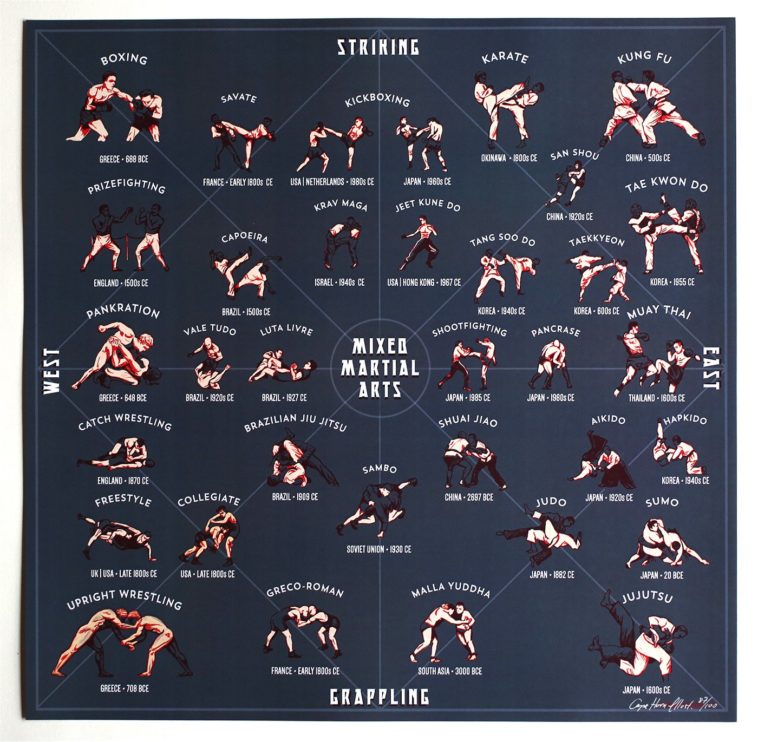Conventional Martial Arts Vs. Modern Fight Sports: Comprehending The Key Differences
Conventional Martial Arts Vs. Modern Fight Sports: Comprehending The Key Differences
Blog Article
Web Content Created By-Thuesen Hovgaard
When you consider martial arts, do you lean a lot more toward the conventional methods or the contemporary fight sports? Each path uses one-of-a-kind advantages and experiences, shaped by their philosophies and training approaches. Typical martial arts highlight individual development and self-control, while contemporary combat sporting activities focus on competition and efficiency. Recognizing these distinctions can guide you in choosing the appropriate method for your trip. Yet just how do these distinctions materialize in training and philosophy?
The Philosophy and Background Behind Standard Martial arts
While many individuals link martial arts with physical combat, the approach and history behind standard martial arts run much deeper. You'll discover that these techniques stress individual development, discipline, and respect.
Originating from ancient techniques, typical martial arts were usually established for Self-Defense and spiritual advancement. gyms that offer martial arts symbolize concepts such as balance, consistency, and self-constraint, guiding specialists past plain combating abilities.
As you train, you'll not only learn techniques however likewise gain insights into the culture and values that formed these arts. The routines and traditions, typically given via generations, foster a sense of community and belonging.
The Affordable Nature of Modern Battle Sports
Modern battle sporting activities have transformed the landscape of martial arts right into an extremely affordable field, where professional athletes challenge in a test of ability, strategy, and endurance.
You'll see that competitors are commonly arranged with rigorous regulations and guidelines, making certain fair game and safety and security. These occasions attract large audiences, sustaining the exhilaration and intensity of matchups.
Athletes educate rigorously, not just for physical expertise but likewise for mental toughness, understanding that every information counts in the ring. https://cons-of-teaching-kids-mar77654.blogofchange.com/35668241/just-how-taekwondo-can-change-your-physical-fitness-journey-release-your-possibility-lost-pounds-and-elevate-your-self-confidence-with-this-dynamic-fighting-style throughout competitions is palpable, as boxers push their limitations to assert success.
Fans value the athleticism and virtuosity involved, making modern combat sporting activities a thrilling spectacle that remains to develop and astound lovers around the world.
Training Approaches and Techniques: A Relative Analysis
The affordable environment of modern battle sports demands ingenious training methods that vary dramatically from traditional martial arts.
In modern-day training, you'll focus on specific strategies, competing, and conditioning, commonly utilizing drills that imitate actual battle situations. You'll see an emphasis on measurable efficiency and frequent competitors to assess your abilities.
On the other hand, standard martial arts prioritize kinds, katas, and thoughtful mentors, commonly highlighting discipline and regard over competition.
Training is usually less intense and may include repeated method instead of real-time sparring.
While both strategies build skill and health and fitness, modern battle sports supply a much more dynamic and adaptable training environment, preparing you for immediate difficulties in the ring or cage.
Pick the path that lines up with your objectives and rate of interests.
Conclusion
In choosing in between traditional martial arts and modern combat sporting activities, it truly comes down to what you value many. If you're seeking individual growth, discipline, and a sense of community, traditional arts may be your best fit. Yet if you thrive on competitors and real-time challenges, contemporary battle sporting activities could be the means to go. Inevitably, both courses supply one-of-a-kind benefits, so it's everything about aligning your training with your individual objectives and rate of interests.
